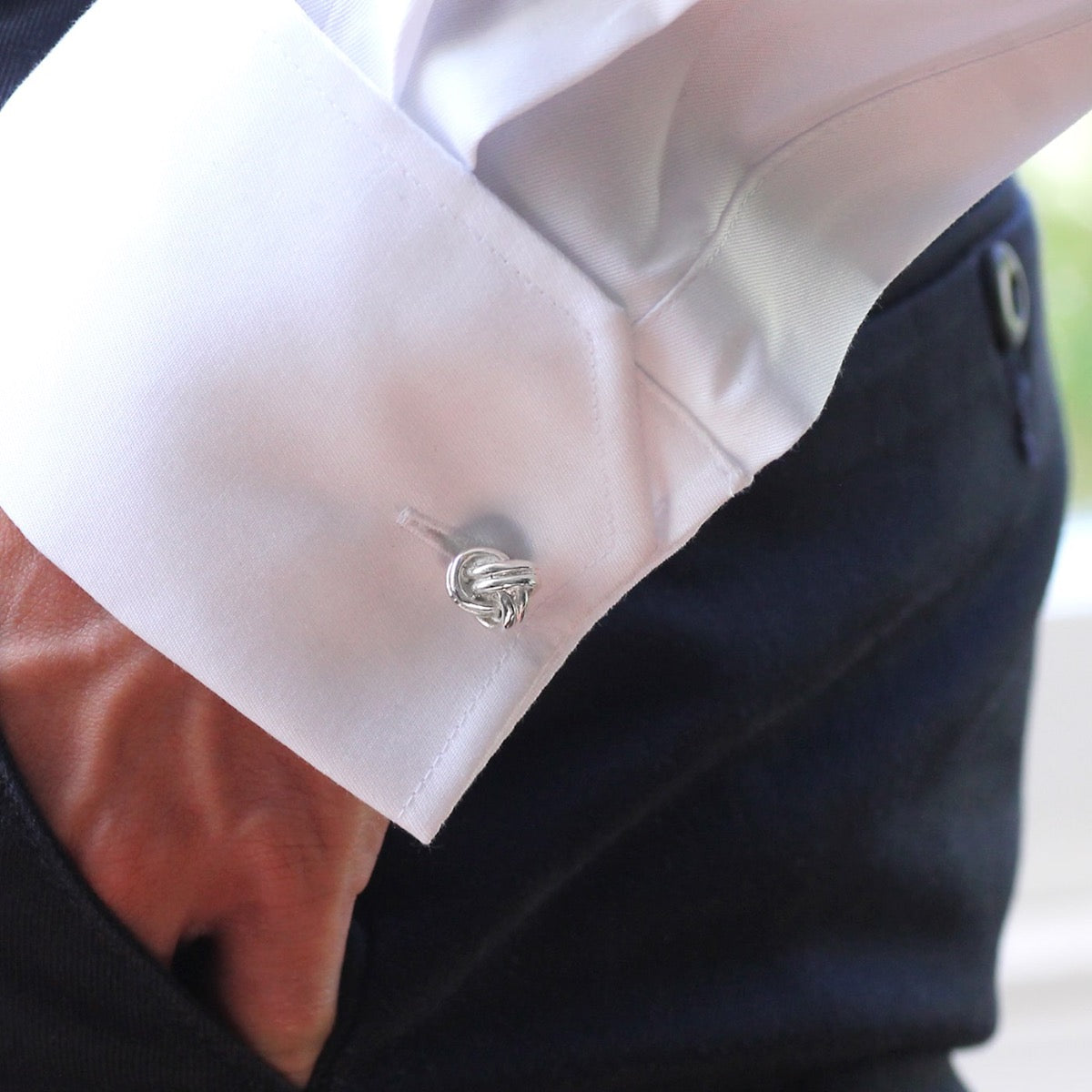History of the Silk Knot Cufflink
Originally published July 13, 2016 – Updated
The Silk Knot Cufflink, also known as the Turk’s Head cufflink, has been a stylish gentleman’s accessory since the early 20th century. Its invention is widely credited to the renowned Parisian shirtmaker Charvet—more on them shortly.
Origins: The Turk’s Head Knot
The design of Silver Silk Knot Cufflinks is based on the Turk’s Head knot, a decorative knot familiar to sailors during the age of sail. It also holds significance within the Scouting community. Upon completing their leadership training, Scout Leaders are awarded the Wood Badge and permitted to wear a woggle - a decorative slide crafted from a Turk’s Head knot, sometimes referred to as the Gilwell Woggle. Notably, this particular item is worn exclusively by trained leaders, not by other Scouts.
The term “Turk’s Head” originates from the knot’s resemblance to a Middle Eastern turban. In some contexts, it’s also known as a “monkey’s fist”, and for this reason, the cufflinks are occasionally referred to as monkey’s fist cufflinks.
“Bachelor Cufflinks”
In the United States, Silk Knot Cufflinks are sometimes dubbed bachelor cufflinks. Their elasticated construction means they can be threaded through a shirt cuff before the shirt is worn, making them particularly convenient for men dressing without assistance. This practical detail allows the wearer to avoid the awkward task of inserting traditional cufflinks single-handedly.
Nautical Uses
The Turk’s Head knot wasn’t created for fashion. Sailors used it for various practical purposes: it was tied around the “king spoke” of a ship’s wheel to mark when the rudder was centred, and used as a weighted end on heaving lines, making ropes easier to throw ashore during docking. When made from heavy rope, the knot could also serve as an improvised weapon in close quarters—its weight making it effective in disabling opponents with a single swing.
Charvet: From Shirts to Style Icons
The French shirtmaker Charvet has operated from its flagship store in Paris’s Place Vendôme since 1877. Renowned for dressing royalty and heads of state, Charvet is widely credited with introducing the Silk Knot Cufflink to the world of menswear in 1904. Originally crafted from silk in solid colours, these cufflinks quickly became a fashionable accessory for discerning gentlemen.
More about Charvet Place Vendôme
Modern Styles and Materials
While the earliest Silk Knot Cufflinks were made from silk, today they are more commonly produced using braided elastic. This allows for greater durability and a wide variety of colour combinations - often two or three colours per pair. This development has made them especially popular with sports clubs, universities, military regiments and national organisations, enabling wearers to display their affiliations subtly but stylishly.
The enduring popularity of Silk Knot Cufflinks has even led to luxury versions being crafted in precious metals such as sterling silver. These designs offer a sophisticated alternative for formal occasions, retaining the distinctive look of the classic Silk Knot while forgoing the elasticated functionality. While they may not offer the same convenience as the so-called bachelor cufflinks, they undeniably add polish and refinement to any outfit.
Explore our collection
We offer a curated selection of solid silver cufflinks, including our own silver version of the Silk Knot Cufflink - ideal for anyone who appreciates a blend of tradition and elegance.

